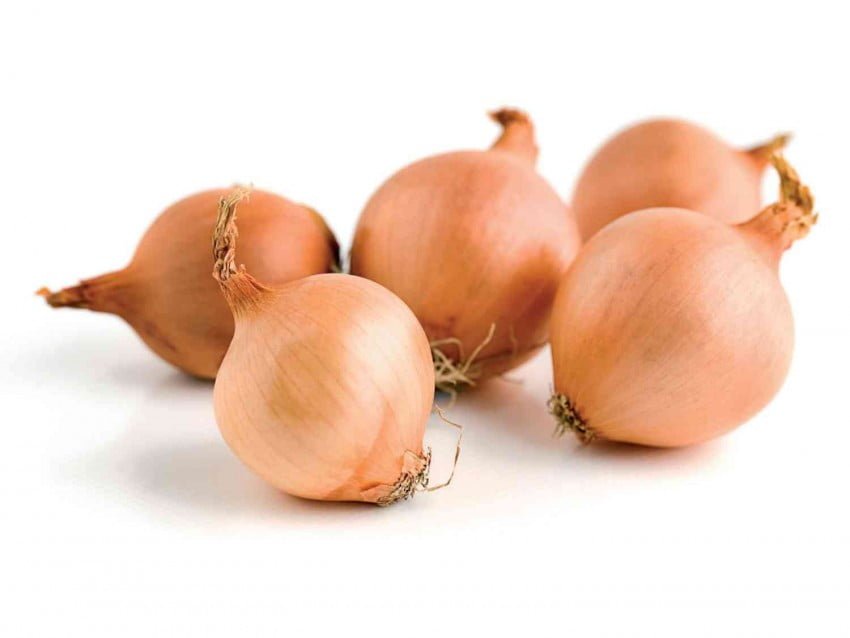Indian media have been flooded with reports of strikes by onion producers in the country amid a drop in the wholesale price of onions to almost 2 cents per kg, EastFruit informs.
“The case looks paradoxical in the context of the global onion crisis since onion prices are breaking records throughout Eurasia from the UK to the Philippines. Moreover, onion prices in Pakistan, neighboring India, are now 10 times higher than in the Indian market,” Evhen Kuzin, head of the analytical department of the APK-Inform: Vegetables and Fruits project notes.
On February 28, so-called auctions, where Indian farmers sell their products to traders, were practically paralyzed in several cities due to strikes and protests by farmers, The Times of India reports. The reason for the strike was a sharp drop in the price of onions due to a major increase in their supply in some regions of the country.
Thus, the average price for onions at an auction in Lasalgaon (Maharashtra) fell by 25% to $0.06/kg over five days (since February 25). Moreover, the minimum price reached $0.02/kg, while the maximum that a farmer could expect for high-quality onions was only $0.10/kg.
“The reasons for the sharp drop in prices are quite standard for countries with the trade of a spontaneous nature. First of all, the weather factor remains one of the main in the agricultural business, which is often forgotten by farmers everywhere, and India is no exception,” Evhen Kuzin comments.
A sharp increase in air temperature in the state of Maharashtra has led to faster ripening of the next crop of onions in the period when unsold volumes of the previous crop were on the market. In addition, the heat severely affected the quality of the harvested crop, and the lack of necessary storage facilities forced farmers to literally flood the local market with onions.
Read also: Onion prices fell sharply in Tajikistan due to warming, but exports are still banned
According to the Hindustan Times, the supply of onions at an auction in the Nashik district (Maharashtra) from December to the end of February doubled from 1 500 tonnes per day to 3 000 tonnes per day. As a result, prices have plummeted so low that many farmers are choosing to throw away their produce, unable to cover even the cost of transporting it to the auction (see a Twitter video recently published in India).
The example described in another article by The Times of India is indicative. A local farmer traveled 70 km to sell 512 kg of onions at a local auction. The buyer at the auction paid 512 INR ($6.21) for this volume, that is, the price was 1 INR/kg (slightly more than $0.01). In addition, the buyer paid to the supplier the cost of transporting and loading the goods, which amounted to 509.50 INR ($6.17). Thus, the farmer received a profit of 2.5 INR for 512 kg of his produce, i.e. about $0.04. At the same time, this farmer will be able to receive his 2.5 INR by cashing a check from the buyer only in 15 days.
“The current situation with onions in India is a striking example of the uncontrolled expansion of production areas and focus only on high prices. According to local experts, the area planted with onions in India has grown by 20% over the past three years, while the development of infrastructure, including storage and export, was slow. Together with the most unpredictable factor, weather, this has led to a catastrophe in the local onion market,” Evhen Kuzin says.
Exports could save the situation for Indian farmers, but even in the context of the global onion crisis, its possibilities are still very limited for producers from the region with low prices, although India annually exports from 1.4 to 2.4 million tonnes of onions. For exports to Malaysia and Indonesia, the quality of onions is not good enough. Direct deliveries to Pakistan, where prices for onions are ten times higher, are impossible from India, and demand from Sri Lanka has fallen due to the economic crisis in the country.
Given the global onion crisis, which was followed by a sharp increase in demand for onion seeds, the current situation in India can serve as an example of what one should not do in the fruit and vegetable market. This also applies to Ukraine, which remains the “champion” in terms of onion prices in the region.
“Back in early February, we warned participants in the onion market in Ukraine that the situation could change dramatically by the start of the next season, as it actually happened in India. Moreover, the season with record high prices often changes with a season of record low prices in Ukraine, although not on the scale as in the Indian market. Onions will be one of the central topics for discussion at the conference of the APK-Inform: Vegetables and Fruits project on March 10 in Lviv, where you can get full information about the market and technologies in this segment. It will be of interest to those who are thinking about entering this business based on the current record prices,” Evhen Kuzin summarizes.
The use of the site materials is free if there is a direct and open for search engines hyperlink to a specific publication of the East-Fruit.com website.




